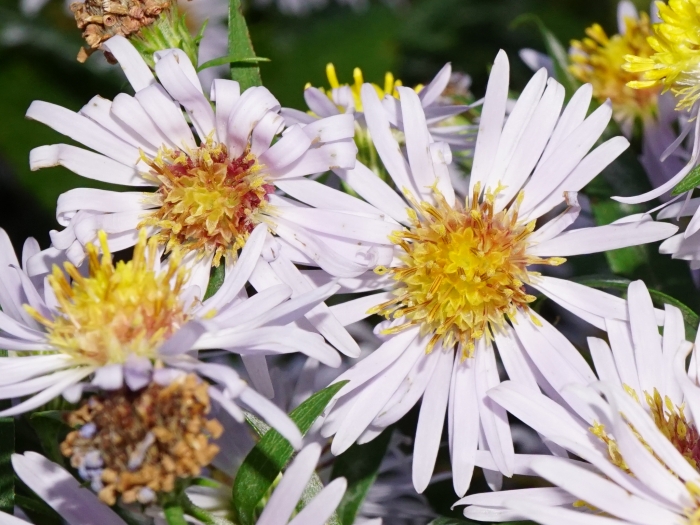Versicolor Aster
(Symphyotrichum ×versicolor)
Versicolor Aster (Symphyotrichum ×versicolor)
/
/

© Patrick Hacker
CC BY 4.0
Image By:
© Patrick Hacker
Recorded By:
Copyright:
CC BY 4.0
Copyright Notice:
Photo by: © Patrick Hacker | License Type: CC BY 4.0 | License URL: http://creativecommons.org/licenses/by/4.0/ | Uploader: pastabaum | Publisher: iNaturalist |

























Estimated Native Range
Summary
Symphyotrichum ×versicolor, commonly known as Versicolor Aster, Starved Aster, or Blue Wood Aster, is a hybrid perennial herb that is a result of crossbreeding between native North American species. It thrives in a variety of habitats, including open woodlands, meadows, and prairies. This aster typically grows to a height of 1-3 feet (0.3-0.9 meters) and a width of 1-2 feet (0.3-0.6 meters). It has a clumping form with branching stems that bear numerous daisy-like flowers. The blooms are blue or purple, with a yellow center, and are quite showy, making them a highlight in the fall garden when many other plants have finished flowering.
Versicolor Aster is valued for its late-season blooms that provide a splash of color when many other perennials are fading. It is an excellent choice for border plantings, wildflower gardens, and as a part of pollinator-friendly landscapes, attracting bees and butterflies. It prefers full sun to part shade and adapts well to medium draining clay or loam soils. While it requires medium amounts of water, it is relatively drought-tolerant once established. There are no major disease problems, but powdery mildew and rust can occasionally affect the foliage. To maintain a tidy appearance and promote vigorous growth, deadheading spent flowers and dividing clumps every few years are recommended.CC BY-SA 4.0
Versicolor Aster is valued for its late-season blooms that provide a splash of color when many other perennials are fading. It is an excellent choice for border plantings, wildflower gardens, and as a part of pollinator-friendly landscapes, attracting bees and butterflies. It prefers full sun to part shade and adapts well to medium draining clay or loam soils. While it requires medium amounts of water, it is relatively drought-tolerant once established. There are no major disease problems, but powdery mildew and rust can occasionally affect the foliage. To maintain a tidy appearance and promote vigorous growth, deadheading spent flowers and dividing clumps every few years are recommended.CC BY-SA 4.0
Plant Description
- Plant Type: Herb
- Height: 1-3 feet
- Width: 1-2 feet
- Growth Rate: Moderate
- Flower Color: Blue, Purple
- Flowering Season: Fall
- Leaf Retention: Deciduous
Growth Requirements
- Sun: Full Sun, Part Shade
- Water: Medium
- Drainage: Medium
Common Uses
Border Plant, Butterfly Garden, Low Maintenance
Natural Habitat
Open woodlands, meadows, and prairies
Other Names
Common Names: Starved Aster, Blue Wood Aster
Scientific Names: , Symphyotrichum ×versicolor, Aster confertus, Aster laevis var. laevigatus, Aster mutabilis, Aster ×laevigatus, Aster ×laevis, Aster ×versicolor, Symphyotrichum xversicolor,
GBIF Accepted Name: